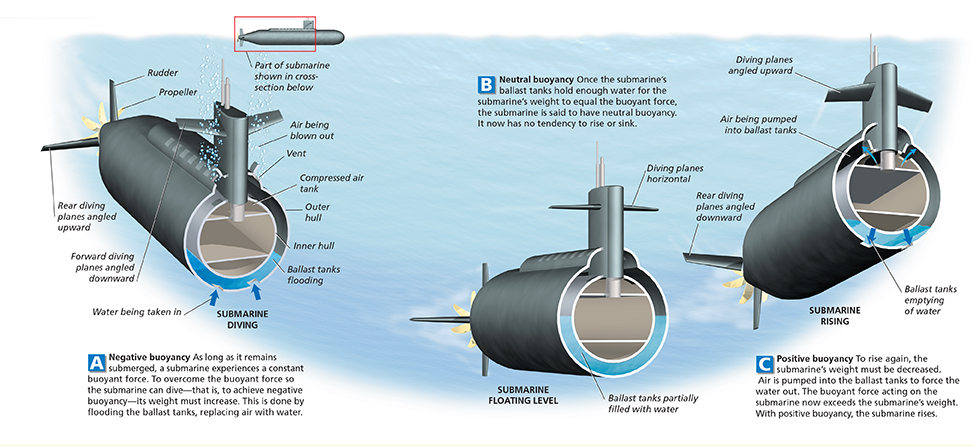Suspended
An object that has the same density as the fluid it is submerged in will be suspended (it will float at any level) in the fluid. The buoyant force acting on the suspended object exactly equals the object's weight. Submarines and some fish are able to suspend themselves in water partly by adjusting their density. To learn more about submarines, read the How It Works box below.
Sinking
If the shape of a ship's hull allows it to float, what causes a ship to sink? As you know, when the ship's weight becomes greater than the buoyant force acting on it, the ship will sink. This may occur when the ship damages its hull and takes on water. As water enters the hull, the ship displaces less water and the buoyant force decreases. If the damage is not fixed, the ship will eventually sink.
 HOW It Works
HOW It Works
Submarine
According to Archimedes' principle, the buoyant force on an object is equal to the weight of the fluid displaced by the object. Whereas the weight of an object acts downward, the buoyant force acts upward. Interpreting Diagrams When diving and surfacing, how do submarines make use of Archimedes' principle?

Steering a submarine
The crew alters the buoyancy of the submarine to make it rise or sink. To steer the submarine through the water, crewmen also use the propeller and the rudder, and adjust the angle of the diving planes.





